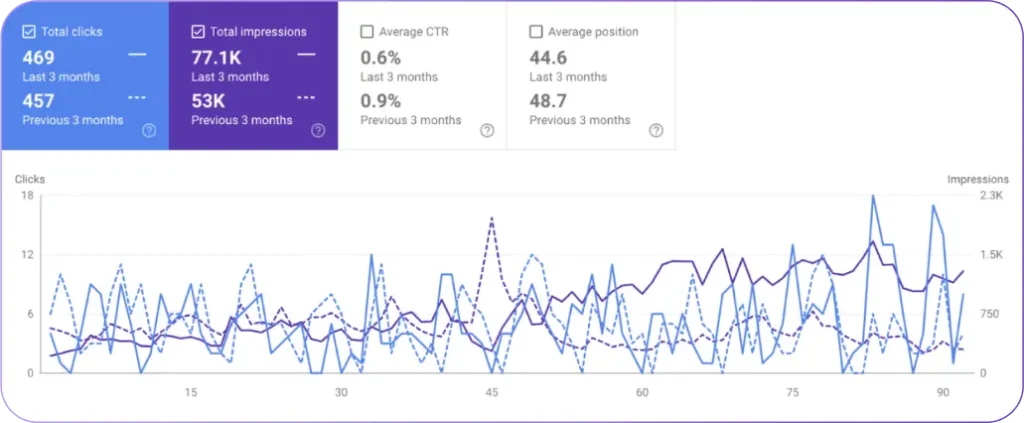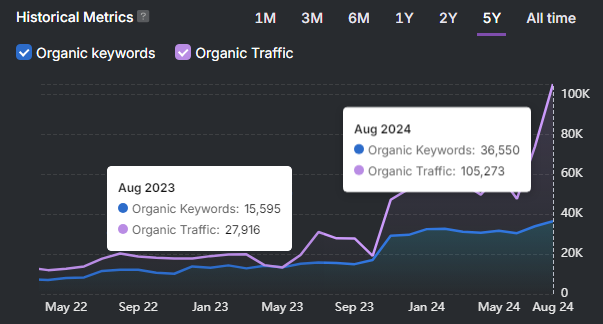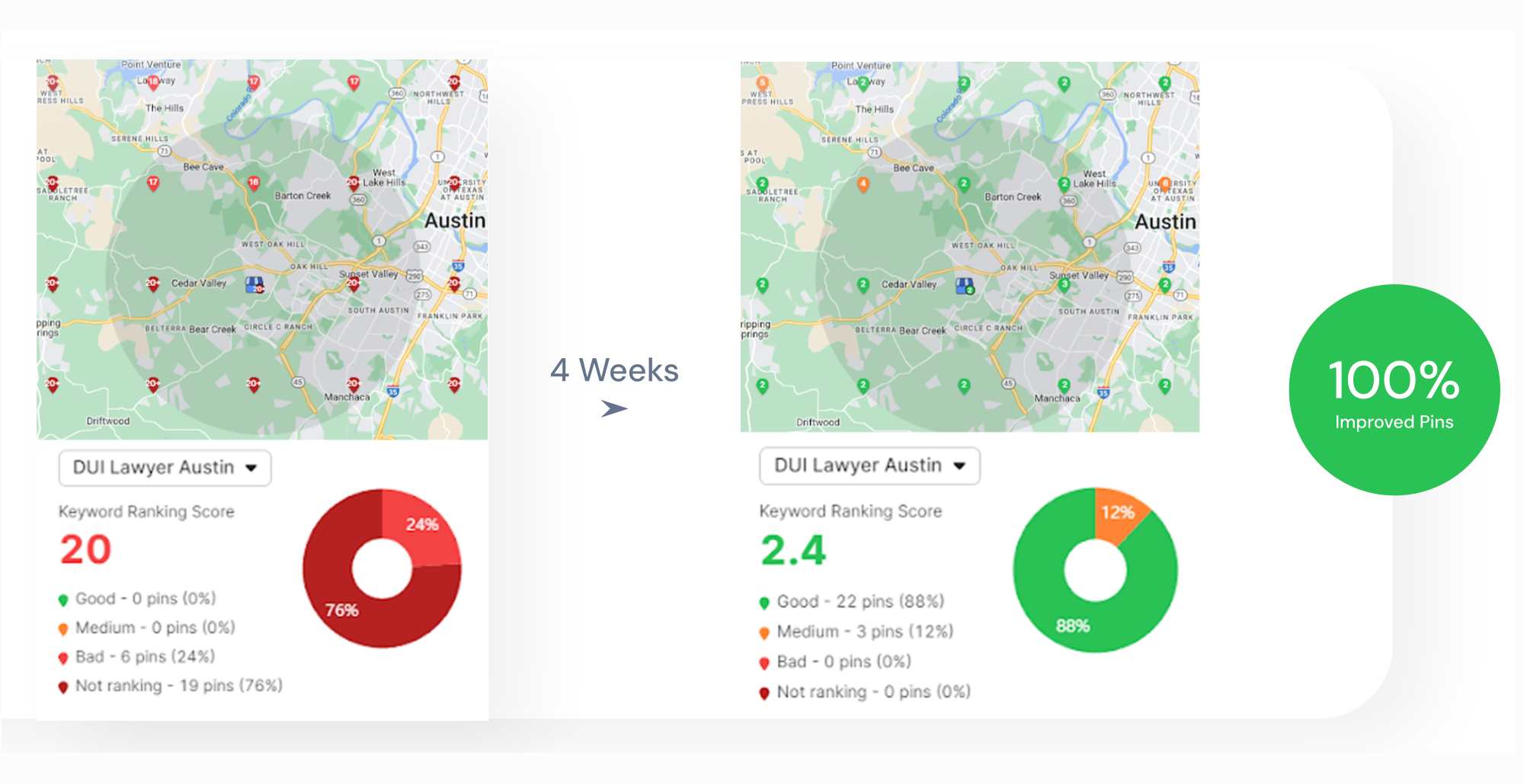Tracking local link building involves monitoring backlinks from locally relevant sources to measure progress and improve local search rankings. Local backlinks show search engines that a business has authority and trust within a specific geographic area.
The goal is to increase visibility in local search results for keywords with local intent, such as “dentist in [city]” or “car repair near me.” These backlinks signal relevance and prominence to search engines, which improves placement in local map packs and organic results.
Focus on tracking links from regional news sites, community blogs, chambers of commerce, local sponsorships, and nearby business directories. Each of these sources adds location-based trust to your domain. Use backlink tracking tools to log new links, identify referring domains, and verify that links remain active.
Measure growth by checking link volume, authority, and anchor text relevance. Prioritize links from domains with geographic proximity and content tied to your target area. Export reports regularly, review link profiles by city or neighborhood, and remove spam or low-value links that dilute local signals.
Tracking links from local sources builds clarity around performance, supports outreach strategies, and drives higher rankings across localized search results.competitors in your area.
What Is Local Link Building Tracking?
Local link building tracking measures backlinks from sources tied to a specific geographic area. These links act as signals that show search engines the relevance and authority of a business within a region, city, or neighborhood.
Unlike general backlink tracking, which focuses on authority or niche alignment, local tracking emphasizes location-based signals. This includes monitoring links from local businesses, news outlets, blogs, directories, and community organizations within the same service area.
The main goal is to evaluate how these links influence local search performance. Strong local link profiles improve visibility in the local pack and in location-triggered organic results. Tracking this activity helps identify which sources drive authority and which gaps still exist.
Track link origin, domain type, anchor relevance, and geographic alignment. Focus on domains that operate near the target location. Monitor link quality, maintain a clean profile, and document progress in regular local SEO reports.
Tracking local link building supports better decision-making, exposes missed opportunities, and strengthens authority across specific regions. This process improves local rankings and drives traffic from nearby users ready to take action.

What Are the 5 Best Ways to Track and Measure Local Link Building Efforts?
Earning local backlinks wins only half the battle. To understand the impact, track how those links influence visibility, traffic, and rankings. Measure link performance to identify which tactics drive results, where gaps exist, and how to focus on high-impact sources. Use this data to adjust strategy, improve outreach, and increase local authority.
There are 5 ways to track and measure local link building efforts. The 5 ways to track and measure local link building efforts are listed below.
1. Monitor Your Backlinks
Review all backlinks gained from local sources. Prioritize quality over quantity. One link from a trusted local site delivers more SEO value than dozens of weak links.
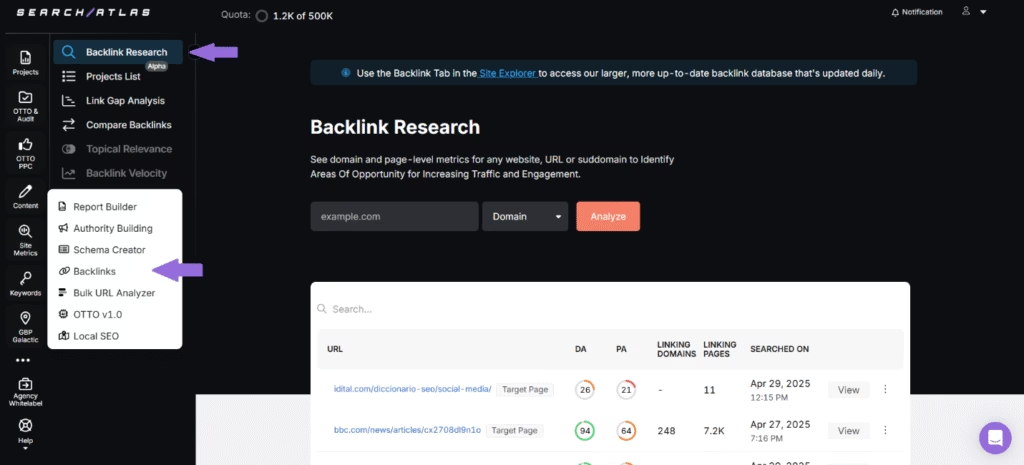
Use tools like the Search Atlas Backlink Analyzer to monitor new backlinks, measure domain authority, and verify the location and niche relevance of linking domains. Analyze anchor text to confirm alignment with target keywords and brand terms. Identify harmful or spammy links. Take corrective actions such as disavowal or removal requests to protect site authority and preserve ranking strength.
2. Analyze Referral Traffic
After backlinks go live, use Google Analytics (GA4) to measure their impact on website traffic. Identify which local websites send visitors. Observe user behavior. Focus on metrics like time on site, pages per session, and goal completions such as contact form submissions or phone calls. Referral traffic that engages and converts shows local link building reaches the right audience.
3. Track Keyword Rankings
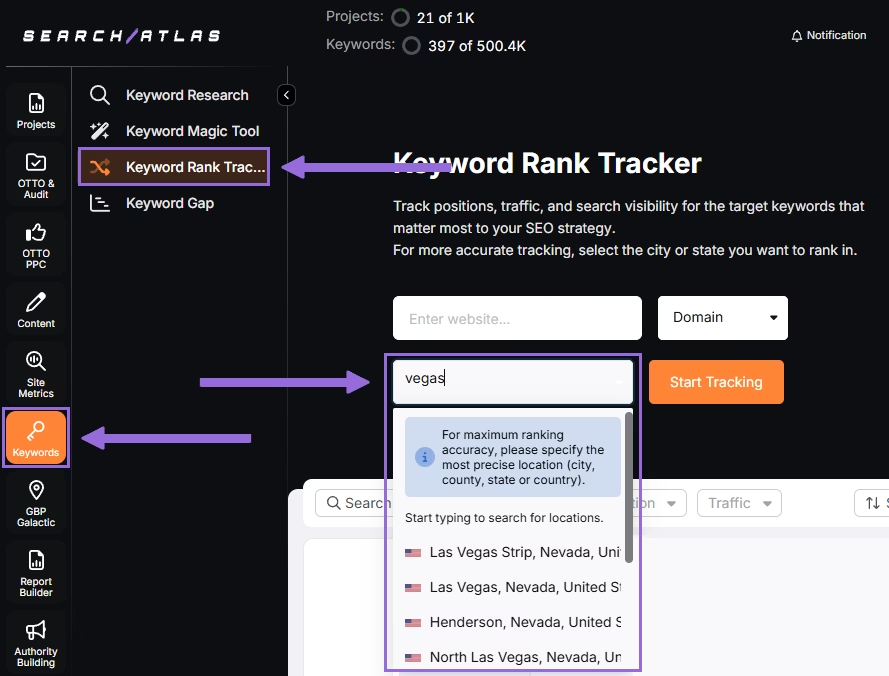
Local backlinks boost rankings in localized search results. Monitor position for geo-targeted keywords and service terms using the Search Atlas Rank Tracker. Compare keyword rankings before and after link building campaigns to measure progress.
Consistent growth in local rankings shows search engines recognize increased relevance and authority. Track trends regularly to identify which link building strategies deliver lasting results.
4. Use SEO Tools with Local Focus
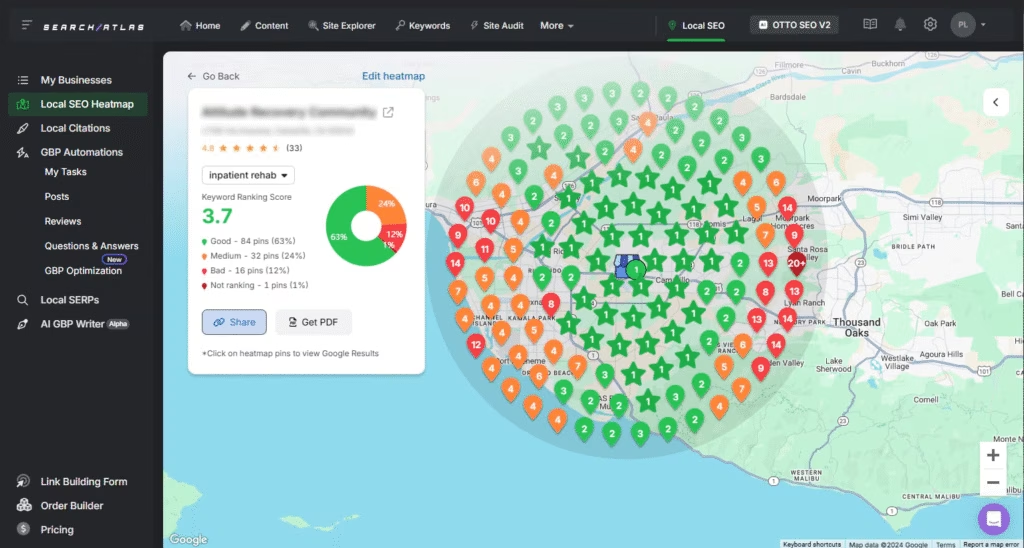
Use specialized SEO tools built for local insights. Use Search Atlas Local SEO Heatmap that shows keyword performance across specific geographic areas. Identify which locations gain the most value from backlinks.

Combine heatmap data with white-label reporting features. Generate clear, professional reports for clients or stakeholders. Highlight the impact of link building efforts and prove local SEO progress with visual evidence.
5. Optimize Based on Results
Tracking goes beyond measurement. It drives continuous improvement. Content types or referral sites that generate more backlinks or traffic deserve focused effort. Underperforming areas demand a refined approach.
Use data-driven insights to shape strategy. Build a scalable local link building process aligned with long-term SEO goals. Let performance metrics guide every decision.
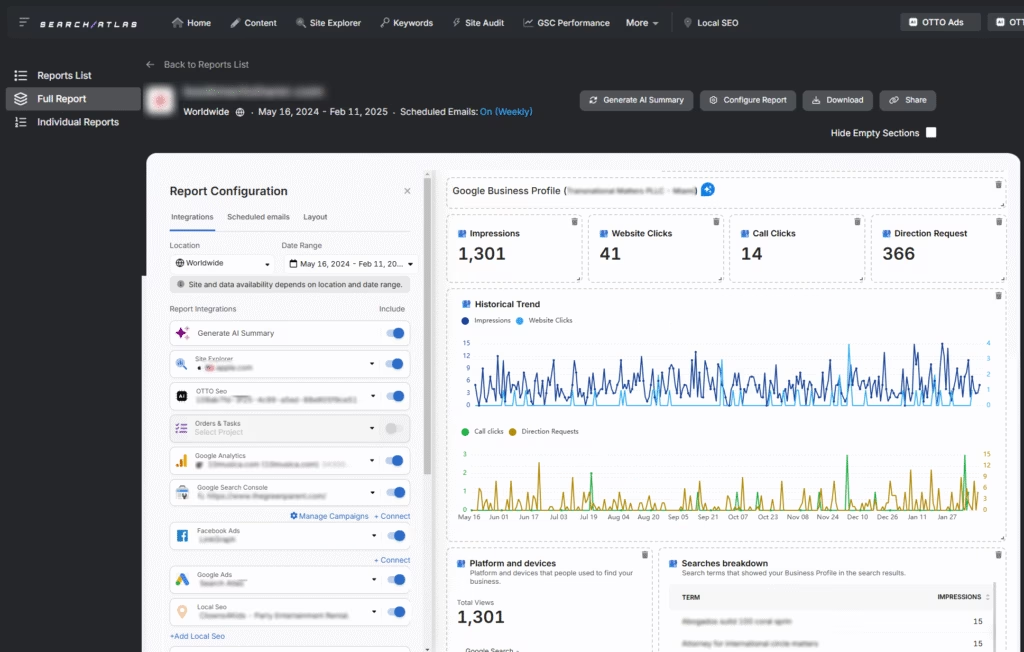
Use the Search Atlas Report Builder to track Google Business Profile (GBP) data by integrating GBP performance metrics directly into your custom reports. Pull insights such as views, clicks, direction requests, and call actions across multiple locations.
Filter results by date range, compare performance trends, and highlight top-performing listings. Use this data to show progress in local visibility, engagement, and user actions across map and search surfaces.
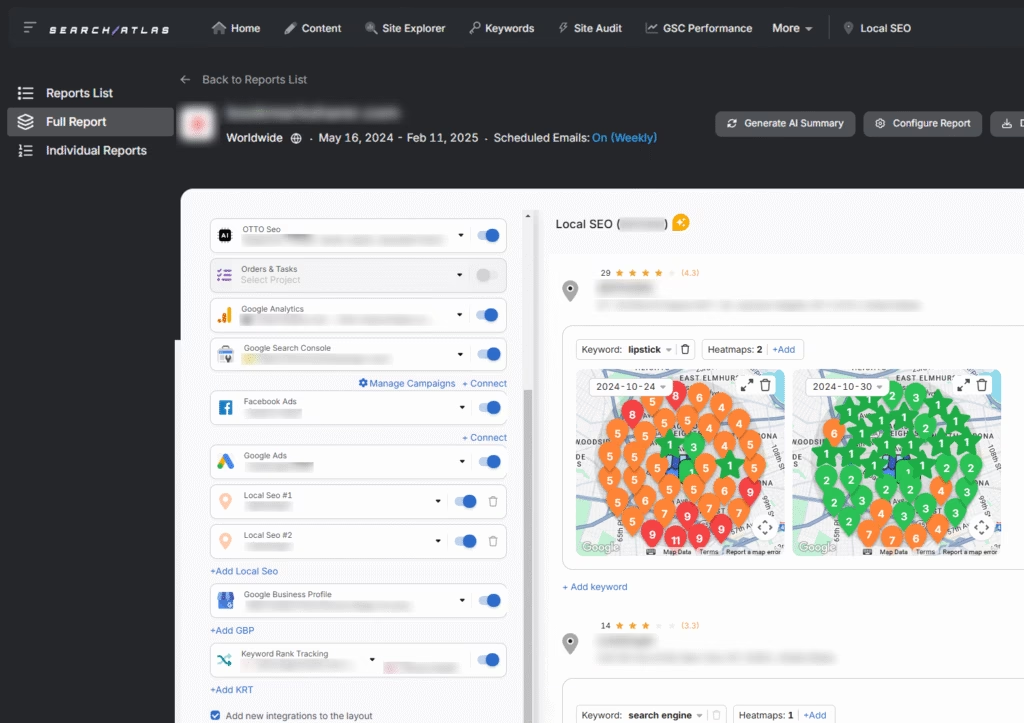
Use the Search Atlas Report Builder to track Local SEO Heatmaps by embedding visual maps that display keyword performance across target regions. Select keywords, define service areas, and view localized ranking grids that reveal how visibility changes by neighborhood or city. Include multiple heatmaps to compare different terms or locations.
These maps provide stakeholders with clear, geographic evidence of ranking shifts and local SEO growth.
Why Automate Your Local SEO Link Building Tracking?
Tracking local link building improves visibility in local search and drives action from nearby users. Success does not come from chasing link volume. Focus on earning backlinks from trusted, relevant, and geographically aligned sources. These links signal authority to search engines and value to the local audience.
Use the strategies in this guide to monitor and refine your backlink profile. Track links from community sites, local media, business directories, and regional partners. Measure each link’s impact on rankings, traffic, and engagement.
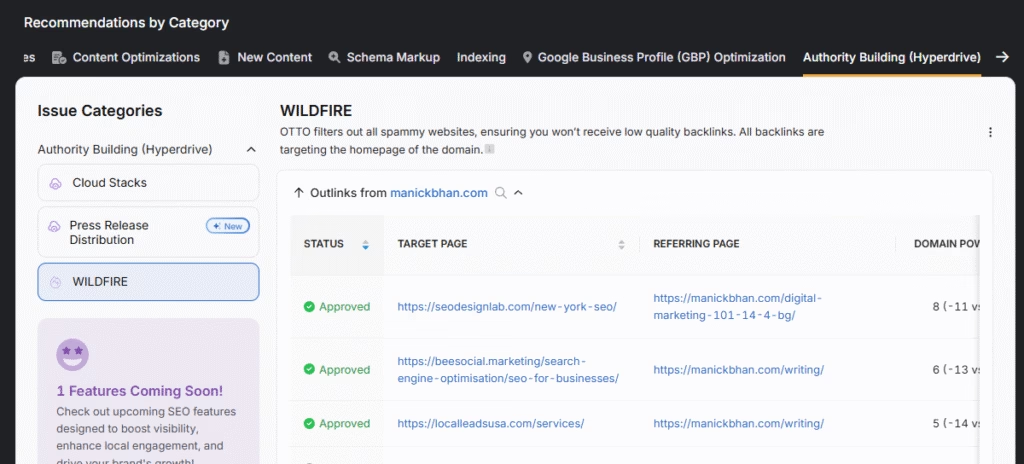
Search Atlas simplifies this process. Use Search Atlas WILDFIRE to automate local link acquisition. Distribute press releases, run PR outreach, and publish content through OTTO’s AI system. Build and track a strong backlink profile with speed and precision.
Start measuring local link building performance. Start your Search Atlas free trial!








